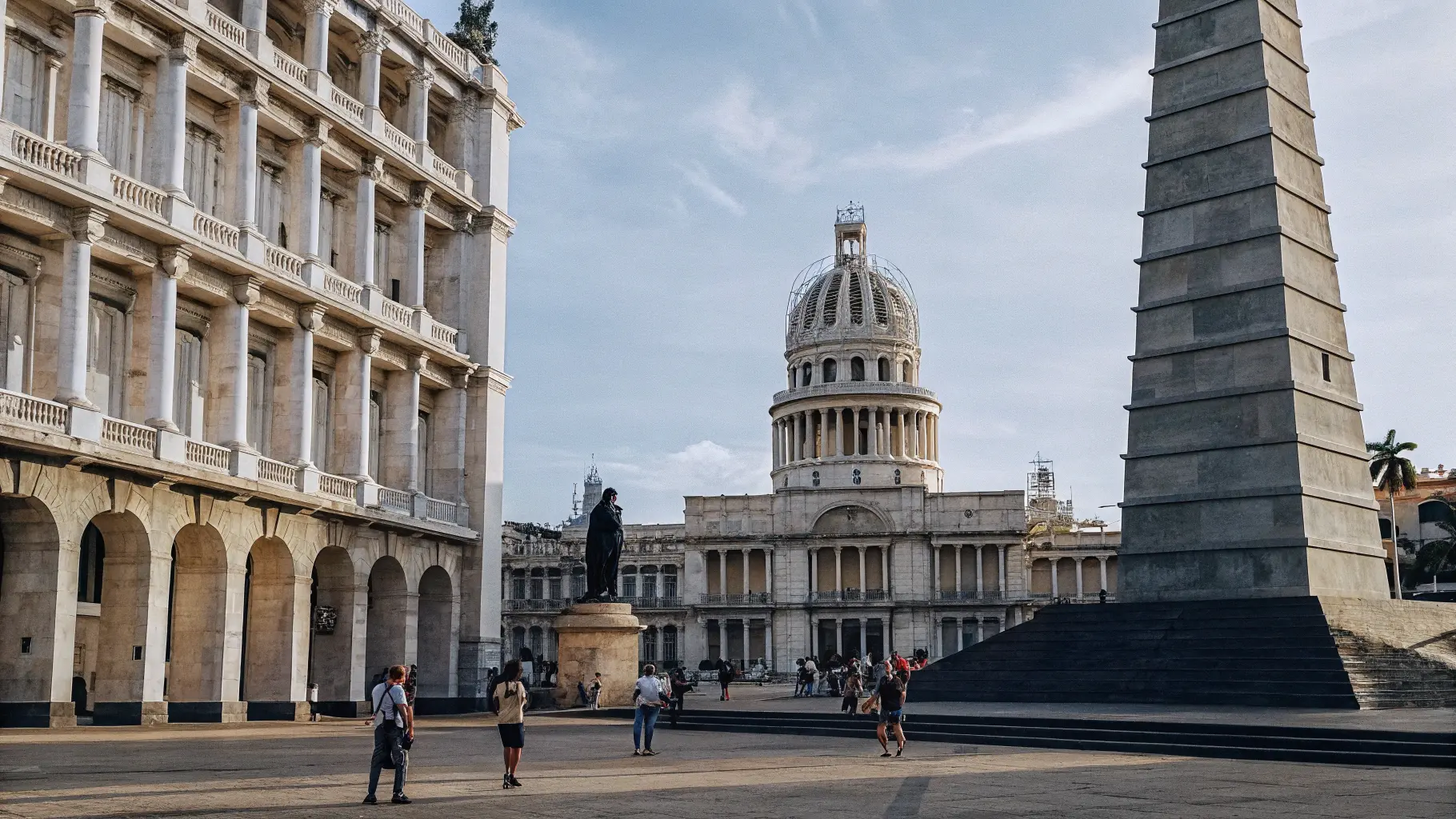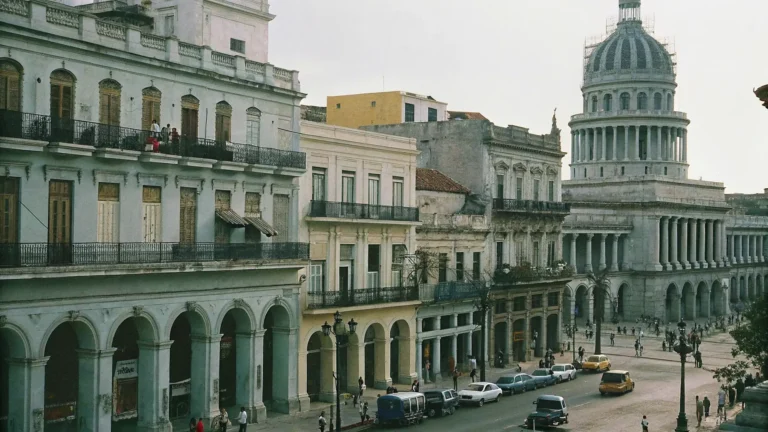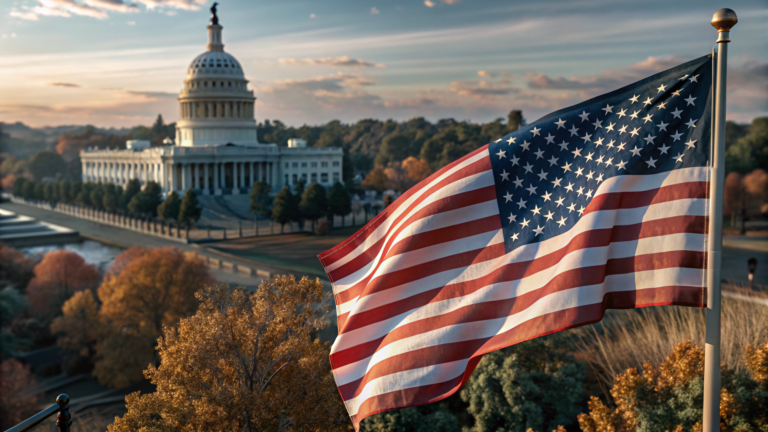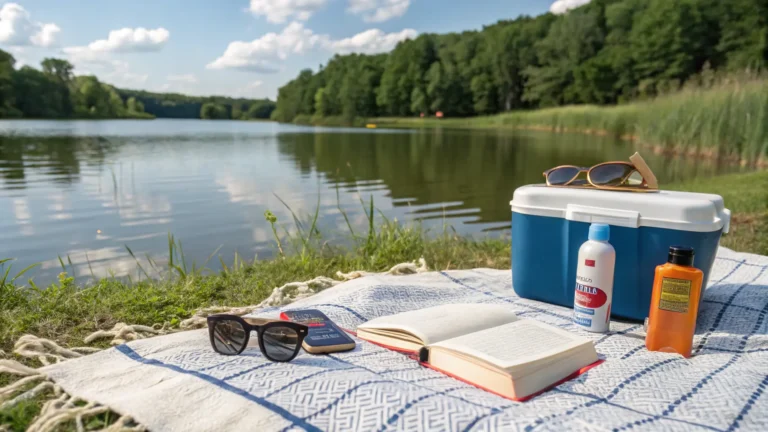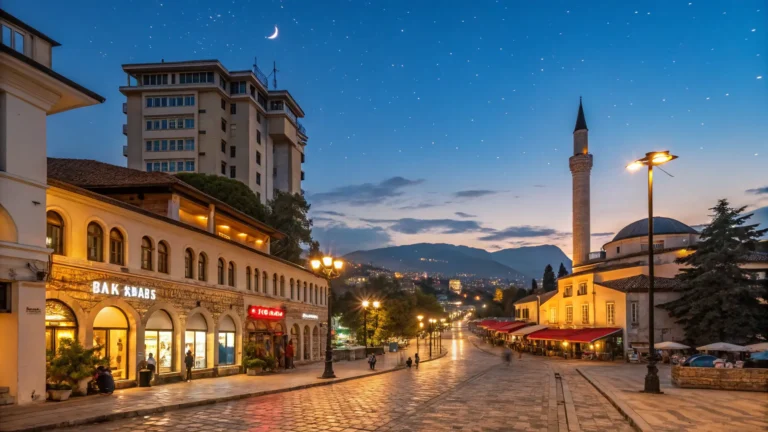Landmarks in Cuba 6 Epic Destinations You’re Insane to Skip
Last updated on May 26th, 2025 at 06:22 pm
My taxi driver Eduardo had been quiet for twenty minutes when he suddenly pulled over and pointed at this crumbling building. “See that balcony up there? My grandmother lived there for sixty years. She died last month.” His voice got soft. “She used to wave at everyone from that spot every morning.”
I looked up at the empty balcony, and something clicked. This wasn’t just sightseeing anymore. Every building, every street corner, every weathered doorway in Cuba holds someone’s story. Real people live behind those faded paint jobs and broken shutters.
That conversation happened in February 2019, and it changed everything about how I saw Cuba. I’d come expecting pretty buildings and good cigars. Instead, I found a country where history isn’t locked away in museums – it’s still unfolding on every street.
Here are six places that’ll mess with your head in the best possible way. Skip them, and you’ll miss something that doesn’t exist anywhere else.
Why Cuba Hits Different Than Everywhere Else
Most places either tear down their old stuff or turn it into fake tourist attractions. Cuba accidentally did neither. They just kept living in their old buildings because, well, that’s what they had.
The result is something nobody planned but everyone should experience. You’re not looking at history through glass cases. You’re walking through it while kids ride bikes down 400-year-old streets and old men play dominoes in courtyards that predate the United States.
Cuba squeezed three UNESCO World Heritage sites onto one island. But forget the official designations. What matters is that you can still touch walls built by Spanish colonists, sleep in houses where sugar barons once lived, and eat dinner in restaurants that have been serving the same families for generations.
Old Havana: The Most Beautiful Mess You’ll Ever See
Nothing prepares you for Old Havana. I thought I knew what to expect from photos, but photos lie. They can’t capture the sound of salsa music spilling out of second-floor windows, or the smell of garlic and cumin drifting from hidden restaurants, or the way the light hits those cracked walls at five in the afternoon.
The historic center covers roughly four square kilometers and contains about 900 colonial buildings. But those numbers don’t tell you what it feels like to wander down Calle Mercaderes at dawn when the only other people around are shopkeepers hosing down their storefronts and old women carrying fresh bread.
Start at Plaza de Armas, where Spanish governors once reviewed troops. Now it’s full of used book stalls where you can buy things like original Castro speeches and tourist guides from the 1950s. The vendors don’t just sell books – they tell you stories about each one.
Walk to the Cathedral next. The baroque facade looks impressive in daylight, but come back at dusk when those twin towers cast long shadows across the plaza. The whole square fills with the sound of church bells echoing off stone walls that have heard the same bells for centuries.
El Capitolio dominates the skyline like Cuba’s answer to the U.S. Capitol building. Except theirs has better proportions and hasn’t been renovated to death. You can tour the inside, but honestly, it’s more impressive from the outside where you can see how it anchors the whole neighborhood.
What you can’t leave without seeing:
- The fortress walls along the harbor – some of the oldest military architecture in the Americas
- Plaza Vieja – completely restored but still feels authentic
- Any random side street between 5-7 PM when everyone comes outside
- The rooftop bars where you can see the whole city sprawling toward the ocean
One thing nobody tells you: those cobblestone streets will wreck your feet. Bring comfortable walking shoes, not cute sandals. Trust me on this one.
Viñales Valley: Where Time Moves Slower
Drive two hours west from Havana and you’ll hit landscape that looks like someone dropped chunks of mountains into a green carpet. The Viñales Valley has these limestone formations called mogotes that shoot straight up from farmland for no logical reason.
But the geology isn’t what hooked me. It was watching 75-year-old Ramón demonstrate tobacco rolling techniques his great-grandfather taught him. His farm has been in the same family since the 1880s, and they still cure tobacco leaves in the same wooden barns, using the same methods their ancestors used.
The whole valley got UNESCO protection, which means no resort development or industrial farming. What you see is what Cuban countryside has looked like for decades – small family farms, oxen pulling plows, farmers who can predict weather by watching cloud formations.
Ramón spent three hours showing me around his five-acre plot. He explained which soil produces the best wrapper leaves, how humidity affects flavor, and why Cuban cigars taste different from cigars made anywhere else. Then his wife brought out coffee that could wake the dead and homemade cookies that were still warm.
Don’t miss these experiences:
- Farm tours with actual farming families – not corporate operations
- Cave exploration at Cueva del Indio, including the underground boat ride
- Horseback riding on trails that connect small villages
- The painted cliff mural that looks ridiculous but somehow works in this landscape
Most activities cost under fifteen dollars and directly support farming families. This isn’t charity tourism – you’re getting authentic experiences while helping people who’ve been working this land for generations.
Trinidad: The Town That Stopped Changing
Trinidad was founded in 1514, reached peak prosperity around 1850, then basically decided it looked perfect and stopped changing. The result is the most complete colonial town in Latin America, where people live in 500-year-old houses like it’s no big deal.
Those cobblestone streets are original 16th-century stonework. The pastel-colored houses are original colonial architecture. Some families living there trace their ancestry back to the Spanish founders. It’s like someone built a time machine and forgot to mention it to the rest of the world.
Plaza Mayor sits in the center, surrounded by colonial mansions that now house museums. But skip the official attractions for a few hours and just sit on the cathedral steps. You’ll watch kids play soccer in the same square where Spanish conquistadors once held military parades, while their grandparents gossip from balconies that were already old when the United States was founded.
The Palacio Brunet showcases how wealthy sugar merchants lived in the 1800s. Even if you don’t care about museums, pay the small entrance fee to see the interior courtyard and tile work. Some of those ceramic tiles were shipped from Spain in the 1820s and somehow survived hurricanes, revolutions, and everything else Cuba has been through.
Every night, Casa de la Trova fills with local musicians playing traditional songs. Tourists are welcome, but this isn’t a show put on for visitors. These are neighborhood musicians who’ve been gathering here for years, playing songs their parents taught them.
Trinidad essentials:
- Climb the bell tower at Iglesia Mayor for views over red tile roofs
- Walk every street in the colonial center – it’s small enough to cover thoroughly
- Buy art directly from local artists working in their home studios
- Eat at family restaurants where the same woman has been cooking for thirty years
Warning: Trinidad gets packed with tour groups between 10 AM and 3 PM. Visit early morning or late afternoon when the light is better and you can actually hear yourself think.
Valley of the Sugar Mills: History You Can’t Ignore
Twenty minutes from Trinidad, the Valle de los Ingenios spreads across rolling hills dotted with ruins from Cuba’s sugar boom. Between 1790 and 1860, more than 70 sugar mills operated here, powered by thousands of enslaved Africans.
This isn’t easy history to confront, but it’s crucial for understanding Cuba. The wealth that built Trinidad’s beautiful colonial houses came from sugar produced by enslaved labor in this valley. Today, jungle vines cover most of the mill ruins, making them look almost romantic until you learn what actually happened there.
The Manaca Iznaga Tower rises 45 meters from the valley floor. Sugar plantation owners used it as a watchtower to monitor enslaved workers in the fields below. You can climb to the top now, and the views are stunning. But standing up there, imagining what those views meant two centuries ago, is deeply unsettling.
I took a guided tour with a local historian who didn’t sanitize anything. He explained the economics of sugar cultivation, described living conditions for enslaved people, and connected that history to modern Cuban society. It wasn’t comfortable, but it was necessary.
The tower bells that once called workers to the fields now chime for tourists. But listening to them ring across those peaceful hills, knowing what they once signified, adds weight to every moment you spend there.
This place forces you to think about wealth, power, and human cost in ways most tourist destinations avoid. It’s not fun, but it’s important.
Castillo de San Pedro de la Roca: The Fortress Nobody Could Take
Ten kilometers outside Santiago de Cuba, Spanish military engineers built what might be the most impressive fortress in the Caribbean. Construction started in 1637 and took over sixty years to complete. The result was a military installation that never fell to enemy attack.
Pirates tried to capture it. British naval squadrons bombarded it. French privateers attempted to storm it. Nobody ever succeeded. Walking through the fortress today, you understand why.
The design is brilliant military architecture – multiple defensive levels, underground tunnels connecting weapons positions, and cannon emplacements that could hit attacking ships from several angles simultaneously. Some original cannons remain in position, still aimed at the harbor entrance they once guarded.
But what impressed me most were the underground chambers. These weren’t just storage areas – they were complete military facilities where soldiers could live for months during siege conditions. The Spanish built this place to withstand anything enemies could throw at it.
The fortress museum displays weapons, uniforms, and ship models that tell the story of Caribbean piracy and colonial warfare. But the real attraction is walking through rooms where Spanish soldiers lived and worked three centuries ago.
What makes this fortress unique:
- Original 17th-century military architecture still intact
- Cannon demonstrations on weekend afternoons
- Underground tunnel system you can explore
- Views across Santiago Bay that go on forever
Entry costs maybe five dollars, and English-speaking guides are available most days. Plan at least three hours here – there’s much more to see than you’d expect from the outside.
El Malecón: Havana’s Outdoor Living Room
The Malecón stretches eight kilometers along Havana’s coastline, but it’s much more than a seawall. It’s where Havana comes to socialize, and every evening it transforms into the world’s longest neighborhood gathering.
Local families bring folding chairs and domino sets. Teenagers bring guitars and bottles of rum. Fishermen bring tackle boxes and patience. Everyone brings stories and opinions about everything from baseball to politics to who’s dating whom in the neighborhood.
I spent countless hours sitting on that seawall, watching life unfold. One evening, a family celebrating someone’s quinceañera invited me to join their party. We couldn’t communicate much beyond smiles and gestures, but we shared cake and listened to an uncle play guitar while vintage Chevrolets and Buicks cruised past like moving museum pieces.
As sunset approaches, the entire Malecón fills with people gathering to watch the daily show. The sun drops toward the horizon, painting everything gold and orange, while waves crash against the seawall and spray mist across the crowd. It’s the same scene that’s played out every clear evening for decades.
Malecón experiences you shouldn’t miss:
- Sunset people-watching – brings the whole city together
- Street food from vendors who’ve worked the same spots for years
- Impromptu music sessions that happen throughout the evening
- Classic car spotting as drivers show off their restored vehicles
The walk is easy and completely free. Just bring water and maybe some snacks to share with people you’ll inevitably meet along the way.
Making It Happen: Practical Stuff
Cuba requires more advance planning than most destinations, but it’s not rocket science.
Visit between November and April for the best weather. You’ll avoid both hurricane season and the brutal summer heat that can make sightseeing miserable. May and October offer fewer crowds but still decent conditions.
Transportation needs thought. Rental cars provide freedom to explore at your own pace, but Cuban roads range from decent to terrifying, and gas stations can be scarce. Organized tours handle logistics but limit spontaneity. Private taxis work well for day trips but get expensive quickly.
Budget around fifty dollars per day including meals, transportation, and entrance fees. Most historical sites charge very little – usually under ten dollars – but guided tours are worth the extra cost for the stories and access you’ll get.
Book accommodation ahead, especially in Trinidad and Viñales where options are limited. Casa particulares (private homes) often beat hotels for both price and experience. You’ll eat better food and get insider tips from hosts who’ve lived in these places their entire lives.
Bring patience and flexibility. Things don’t always work perfectly in Cuba, but that’s part of what makes it interesting. Some of my best experiences happened when plans fell apart and I ended up somewhere completely unexpected.
Why This Matters More Than You Think
These landmarks in Cuba represent something that’s vanishing everywhere else – places where history is still alive, still being lived, still part of daily experience rather than something preserved under glass.
But Cuba is changing rapidly. Foreign investment is increasing, tourism is growing, and infrastructure is modernizing. The authentic, slightly chaotic Cuba I experienced might not exist much longer.
I’m not against progress – people deserve better roads, reliable electricity, and economic opportunities. But there’s something irreplaceable about experiencing history that’s still happening, still being shaped by people who’ve inherited it from their grandparents.
Old Havana’s colonial streets, Viñales Valley’s traditional farms, Trinidad’s preserved architecture, the sugar valley’s difficult history, Santiago’s unconquered fortress, and Havana’s social seawall together tell Cuba’s story in ways no museum exhibit can match.
These places changed how I think about travel, about history, and about what really matters when you’re exploring somewhere new. They’re not just photo opportunities or boxes to check off a list. They’re living connections to the past that help you understand the present.
What’s Your Story?
Cuba gets under your skin in ways you don’t expect. It challenges assumptions, changes perspectives, and creates memories that stick with you long after you return home.
Have you experienced Cuba’s landmarks? Planning a trip and wondering what to expect? Got questions about logistics or what to prioritize with limited time? Drop a comment below – I love hearing other people’s Cuba stories and helping folks plan trips based on lessons I learned the hard way.

